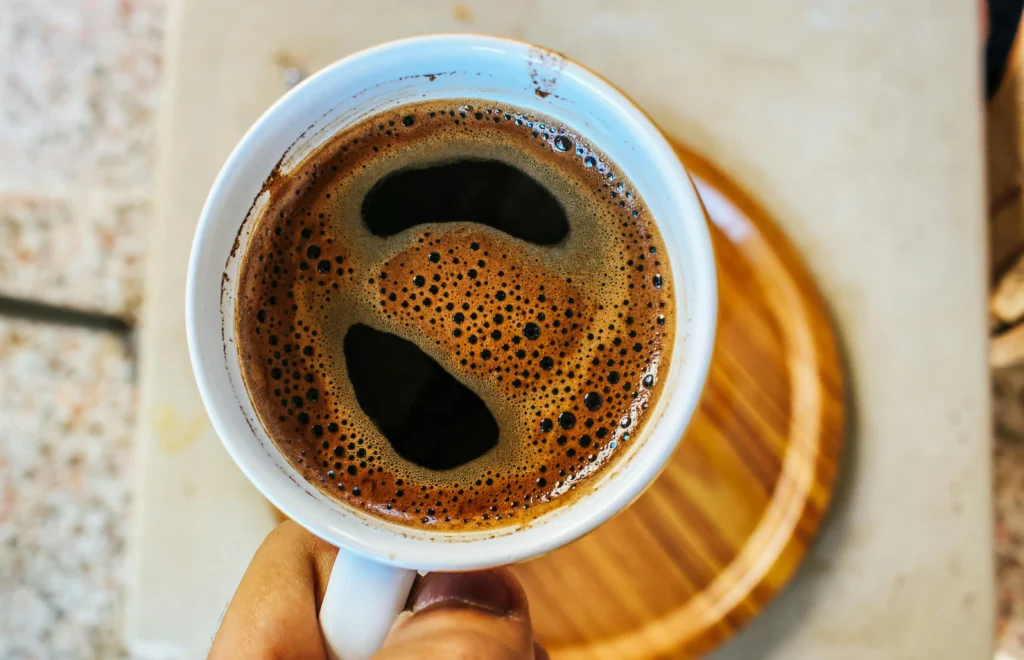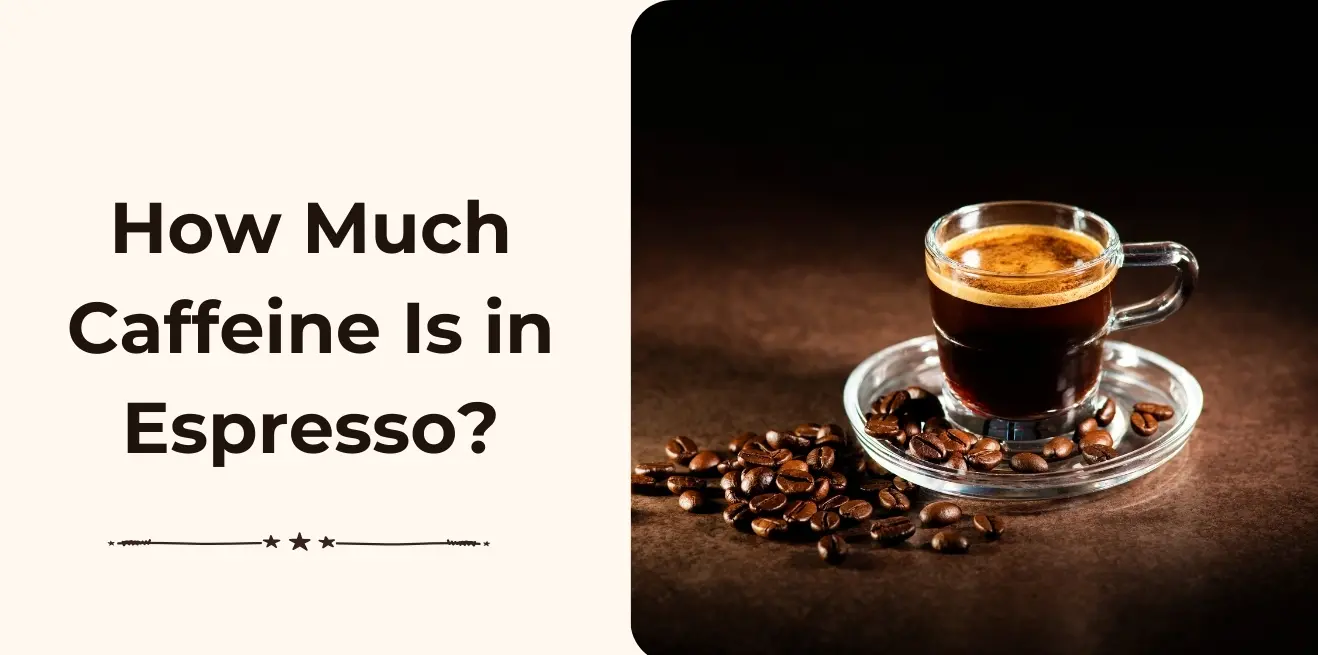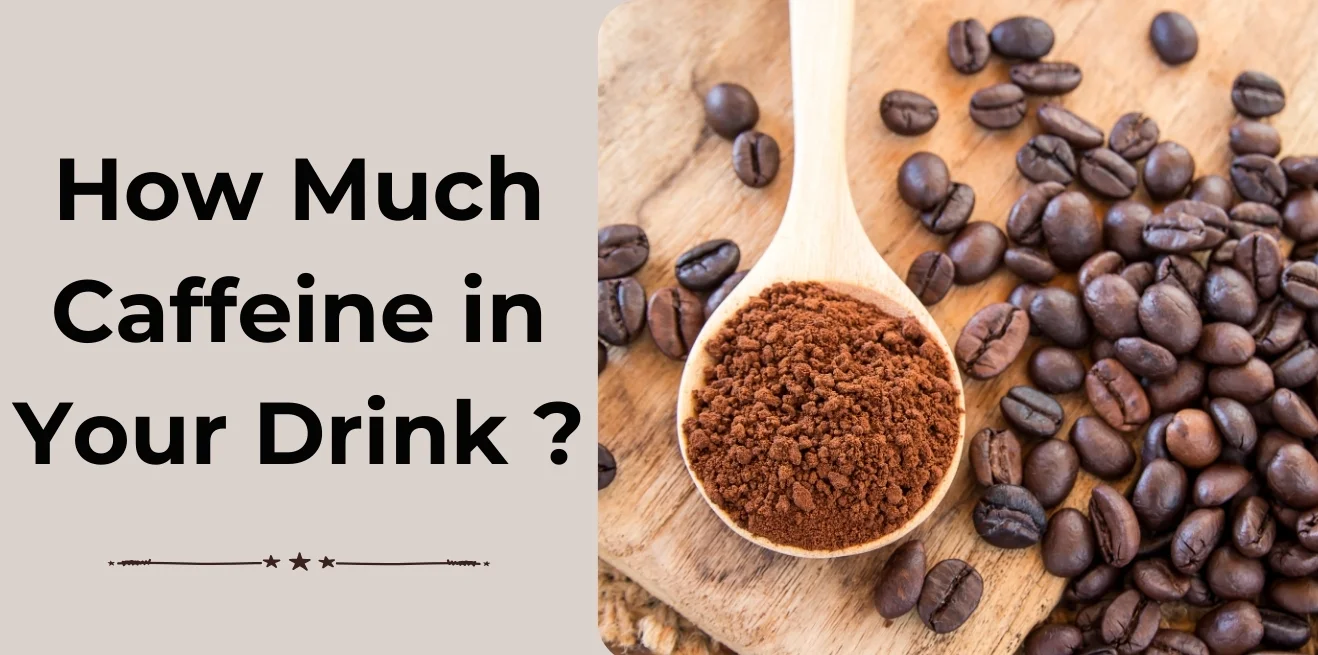☕ Why it is Important to Understand Espresso’s Caffeine Content ?
Espresso Cup Size is Small, but the Strength of Caffeine in Espresso is very strong. Because of its small size, many people assume it has less caffeine than regular coffee. Even one shot of espresso can have as much caffeine as a full cup of drip coffee, depending on how it’s brewed.
For people who are sensitive to caffeine, knowing the Amount in a single shot is important because too much caffeine can lead to restlessness, trouble sleeping 🛌, or a racing heart. Students Drink it for late-night study 📚 and regular coffee drinkers who have several cups a day should be aware of how much caffeine they are consuming in a Day.
We Should Also note that, espresso is the base of most coffeehouse drinks 🍵. Popular choices like lattes, cappuccinos, and Americanos all start with espresso. So, even if you’re not drinking it directly, you’re still getting that caffeine boost when you enjoy these drinks .
☕ Does Espresso Contain Caffeine?
✅ Yes — and in high concentration per ounce.
Espresso is one of the strongest forms of coffee when it comes to caffeine. Even though the serving size is small, it holds a high amount of caffeine in just one ounce and this makes it much more concentrated than regular brewed coffee.
Because of the strong caffeine content, espresso gives a quick energy boost. It is made by forcing hot water through finely ground coffee under high pressure. This process creates a rich and bold flavor — along with a powerful caffeine kick.
Espresso is also used as the base in many drinks like Lattes, cappuccinos, and Americanos all start with espresso shots. So even if you aren’t drinking it straight, you’re still getting that concentrated caffeine in your cup.
How Much Caffeine in Espresso? (By Serving Size)
The amount of caffeine in espresso depends on how much you drink and how it’s prepared. Here’s a quick breakdown:
1. Single Shot (1 oz) – ~63 mg
A standard espresso shot has about 63 milligrams of caffeine. It’s small but strong 💥.
2. Double Shot (Doppio) – ~125 mg
Most coffee shops use a double shot in drinks. It gives a solid caffeine boost without being too much for most people 🚀.
3. Triple Shot – ~190 mg
This is for those who need a serious jolt of energy ⚡. It’s strong, so drink with care if you’re sensitive to caffeine.
4. Ristretto (Short Shot) – ~45–55 mg
A ristretto is a shorter, more concentrated shot. It uses less water and may have slightly less caffeine but a stronger flavor 💧➡️☕.
5. Lungo (Long Shot) – ~75–90 mg
A lungo uses more water and takes longer to brew. It may have more caffeine than a single shot, but the flavor is milder 🕒☕.
⚠️ Note: Caffeine levels can vary based on the type of coffee bean, roast level, and how the espresso is made.
🧪 Ingredient Breakdown: Where Espresso’s Caffeine Comes From
Several factors affect how much caffeine ends up in your espresso. It’s not just about the size of the shot — what goes into making it matters too.
1. Coffee Beans (Arabica vs Robusta)
There are two main types of coffee beans: Arabica and Robusta.
- Robusta beans have nearly twice as much caffeine as Arabica beans ⚡⚡.
- Arabica is smoother and used more often in specialty coffee, while Robusta is stronger and cheaper.
2. Roast Type (Light vs Dark)
- Light roast beans keep more caffeine by weight than dark roast.
- Even though dark roast tastes stronger, it actually has a bit less caffeine per bean 🌕🔥.
3. Grind & Pressure
- Finer grind means more surface area, which leads to stronger extraction.
- Higher pressure and longer brewing time pull more caffeine out of the grounds 🧯⏱️.
- Baristas carefully balance these to control strength and taste.
4. Shot Size (Ristretto vs Lungo)
- A ristretto uses less water, so it’s more concentrated but may have a bit less total caffeine.
- A lungo uses more water and brews longer, so it may have more caffeine, even if the flavor feels lighter ☕💧.

⚖️ Caffeine Comparison: Espresso vs Other Coffee & Drinks
Espresso is strong for its size, but how does it compare to other popular drinks? Here’s a side-by-side look:
1. Espresso vs Drip Coffee (8 oz ~95 mg)
- A single shot of espresso has about 63 mg of caffeine, but it’s only 1 oz.
- An 8 oz cup of drip coffee has more total caffeine (~95 mg) but is less concentrated.
2. Espresso vs Cold Brew (12 oz ~150–200 mg)
- Cold brew is steeped for many hours, so it’s very strong.
- A 12 oz cold brew often has more caffeine than even a double shot of espresso ⚡💧.
3. Espresso vs Instant Coffee
- Instant coffee usually has 30–90 mg per serving, depending on the brand and amount used.
- A single espresso shot usually beats instant coffee in both strength and taste ☕✅.
4. Espresso vs Red Bull / Monster
- Red Bull (8.4 oz) has about 80 mg of caffeine.
- Monster (16 oz) has around 160 mg.
- A double espresso is similar to Red Bull but with less sugar and fewer additives 💪⚡.
5. Espresso vs Tea & Soda
- Black tea (8 oz): ~40–50 mg
- Green tea (8 oz): ~25–30 mg
- Cola (12 oz): ~30–40 mg
- Espresso has much more caffeine than most teas or sodas, even in a smaller size 📏☕.
Espresso for Different Groups: Safe or Not?
Espresso is popular, but it’s not the best choice for everyone. Here’s how it affects different groups of people:
1. Teens and College Students
Many students drink espresso to stay awake during classes or exams. While one shot a day is usually safe, too much caffeine can cause jitters, trouble focusing, or poor sleep. Teens should be extra careful, as their bodies are more sensitive to caffeine.
2. Pregnant or Breastfeeding Individuals
Health experts recommend limiting caffeine to about 200 mg per day during pregnancy. That’s about one to two espresso shots. Drinking more than that could affect the baby’s health, so it’s best to check with a doctor first 🩺👶.
3. Caffeine-Sensitive People
Some people feel shaky, anxious, or get headaches even after a small amount of caffeine. For them, espresso might be too strong, even in small servings. Decaf options or lighter drinks are better choices for these individuals.
4. People with Heart or Sleep Conditions
Espresso can raise heart rate and blood pressure. If someone has a heart condition or trouble sleeping, it’s best to limit or avoid espresso, especially in the evening 🌙. Always follow medical advice if you have health concerns.
🧠 How Espresso Affects the Body
Espresso doesn’t just wake you up — it also affects your body in several ways. Here’s what usually happens after you drink it:
⚡ Immediate Mental Boost
Espresso gives a quick burst of energy. Caffeine reaches the brain in about 15 to 30 minutes, helping you feel more alert, focused, and awake. That’s why many people reach for it first thing in the morning or during a mid-day slump.
❤️ Blood Pressure Spike and Alertness
Caffeine causes a temporary rise in blood pressure and makes the heart beat a little faster. This boosts energy and focus but may not be good for people with heart issues. For most people, it leads to increased alertness and quicker reaction times ⏱️.
😴 Crash Potential (Especially with Sugar)
After the caffeine wears off — usually in a few hours — you might feel a crash. This can feel like sudden tiredness or loss of focus. If the espresso had a lot of sugar or sweeteners, the crash can feel even worse 🍭📉.
⏳ Energy Duration vs Coffee or Energy Drinks
Espresso gives a fast but short boost compared to regular coffee or energy drinks.
- Regular coffee releases caffeine more slowly, so it may last longer ☕🕒.
- Energy drinks often contain extra ingredients like sugar and taurine, which may stretch out the energy but also lead to bigger crashes.
Alternatives to Espresso for Caffeine Management
If you love the taste of espresso but want to manage your caffeine intake, there are plenty of smart options:
1. Half-Caff Espresso Blends
These blends mix regular and decaf beans, giving you the espresso flavor with half the caffeine. Great for people trying to cut back without giving it up completely.
2. Single Origin Low-Caffeine Beans
Some coffee beans, especially Arabica from certain regions, naturally have less caffeine. Choosing these beans means you get smoother flavor with lower caffeine levels.
3. Decaf Espresso
Decaf espresso still tastes rich and bold but has only a small amount of caffeine (about 2–5 mg per shot). It’s a great choice for late evenings or anyone avoiding caffeine altogether.
4. Espresso-Flavored Herbal or Chicory Brews
These coffee alternatives use herbs or chicory root to mimic espresso’s flavor — without caffeine. They’re completely stimulant-free and safe for anyone sensitive to coffee ☕🌼.
✅ How to Consume Espresso Safely
Enjoying espresso is fine — as long as you keep it in balance. Here are a few tips to stay safe and energized:
⏳ Limit Shots Per Day
Most experts suggest no more than 2–3 shots per day for most adults. That’s about 125–200 mg of caffeine — enough to feel alert without overdoing it.
🌙 Don’t Drink Before Bed or Naps
Caffeine stays in your system for 4 to 6 hours, sometimes longer. Drinking espresso too late in the day can make it hard to fall asleep.
🍭 Avoid Sugary Espresso Mixes Too Often
Drinks like flavored lattes and espresso-based frappes often contain lots of sugar. Too much sugar can lead to energy crashes and other health issues, even if the caffeine amount is moderate.
📊 Track Caffeine If You’re Drinking More Than One Cup Style Per Day
If you’re having drip coffee in the morning, espresso at lunch, and tea later, your caffeine is adding up and you need to keep an eye on the total so you don’t go over your daily limit.
Important Points About Espresso
Point 1: How much caffeine is in a single shot of Espresso?
A single shot of espresso (1 oz) contains about 63 milligrams of caffeine on average ☕⚡.
But, the exact amount Depends on
- Type of coffee bean (Robusta has more caffeine than Arabica)
- Roast level (light roasts may have slightly more caffeine by weight)
- Grind size and brewing method
Point 2: How much caffeine in double Espresso ?
A double espresso (also called a doppio) contains about 125 milligrams of caffeine on average.
This is basically two single shots pulled at the same time, so the caffeine is nearly doubled. Just like with a single shot, the exact amount can vary slightly based on Type of coffee bean, Roast Level and Grind Size.
Conclusion: Small Sip, Big Energy
Espresso is a small drink with a powerful effect. It offers a fast, concentrated caffeine boost that’s perfect for busy mornings or tired afternoons.
But because it’s strong, it’s easy to go over your limit if you’re also drinking other coffee, tea, or energy drinks. Know your dosage and listen to your body, especially if you’re stacking drinks throughout the day.
How to make a Good Espresso
FAQs About Espresso and Caffeine
Q1: Is espresso stronger than regular coffee?
Yes, in concentration.
Espresso has more caffeine per ounce than regular coffee. But since the serving is smaller, a full cup of coffee may have more total caffeine.
Q2: Can espresso keep you awake all night?
It can, especially if taken late.
Caffeine stays in your body for several hours. Drinking espresso in the evening might lead to trouble falling asleep, especially for sensitive people.
Q3: What’s the best time to drink espresso?
Morning to early afternoon.
The best time is before 2–3 PM, when your body can use the boost without it affecting your sleep 🕒☕.
Q4: Does espresso have more caffeine than energy drinks?
It depends on the serving size.
A single or double shot of espresso can be equal to or less than many energy drinks in caffeine. But espresso has no added sugars or artificial ingredients, which makes it a cleaner option for many.
Q5: Is decaf espresso really caffeine-free?
Not completely.
Decaf espresso still has a tiny amount of caffeine — usually 2 to 5 mg per shot. It’s very low, but not 100% caffeine-free.





